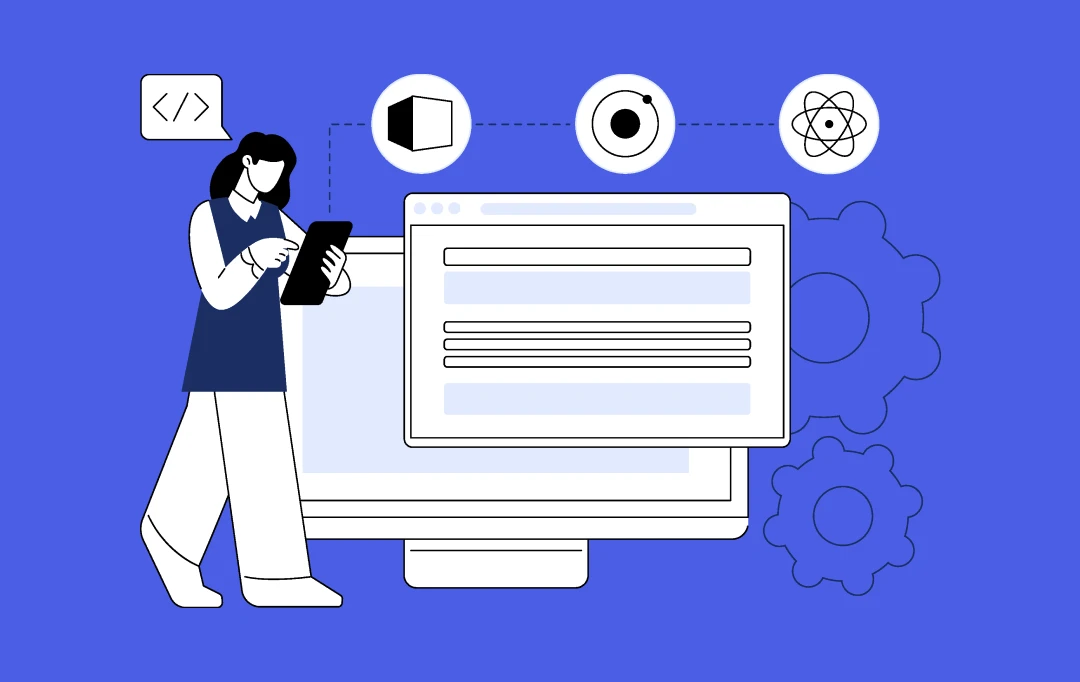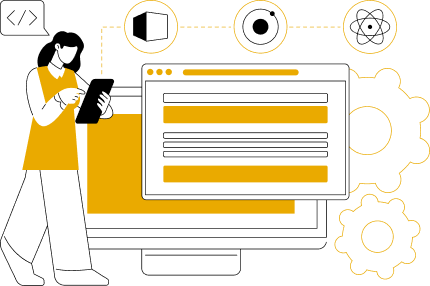- Why Software Development for Tennis Tournament is Essential
- Features of Tennis Tournament Software Development
- Basic Features for Tennis Tournament Software Development
- Advanced Features for Tennis Tournament Software Development
- How to Develop Tennis Tournament Software - A Step-by-Step Process
- Step 1: Define Project Goals
- Step 2: Design UI/UX
- Step 3: Choosing the Right Tech Stack
- Step 4: Develop Tennis Tournament Software
- Step 5: Test and Deploy the Software
- Step 6: Monitor and Maintain the Software
- Challenges of Tennis Tournament Software Development and How to Overcome Them
- Real-Time Score and Data Updates
- Multi-Platform Compatibility
- Compliance and Data Security
- Integrations with Third-Party Services
- Cost to Build Tennis Tournament Software
- Monetization Strategies for Tennis Tournament Software Development
- Build Next-Gen Tennis Tournament Software with Appinvenitv
- FAQs
“Do you know that tennis is not the national sport of any country, yet it is one of the most popular sports in Europe, right after football and basketball? In 2024, approximately 106 million players (29.57 million from EU) competed at various levels across 199 countries. With over 1 billion fans globally (Spain has the highest share of tennis fans, nearly a third of the population), Tennis continues to captivate sports lovers, making it a true international sensation.”
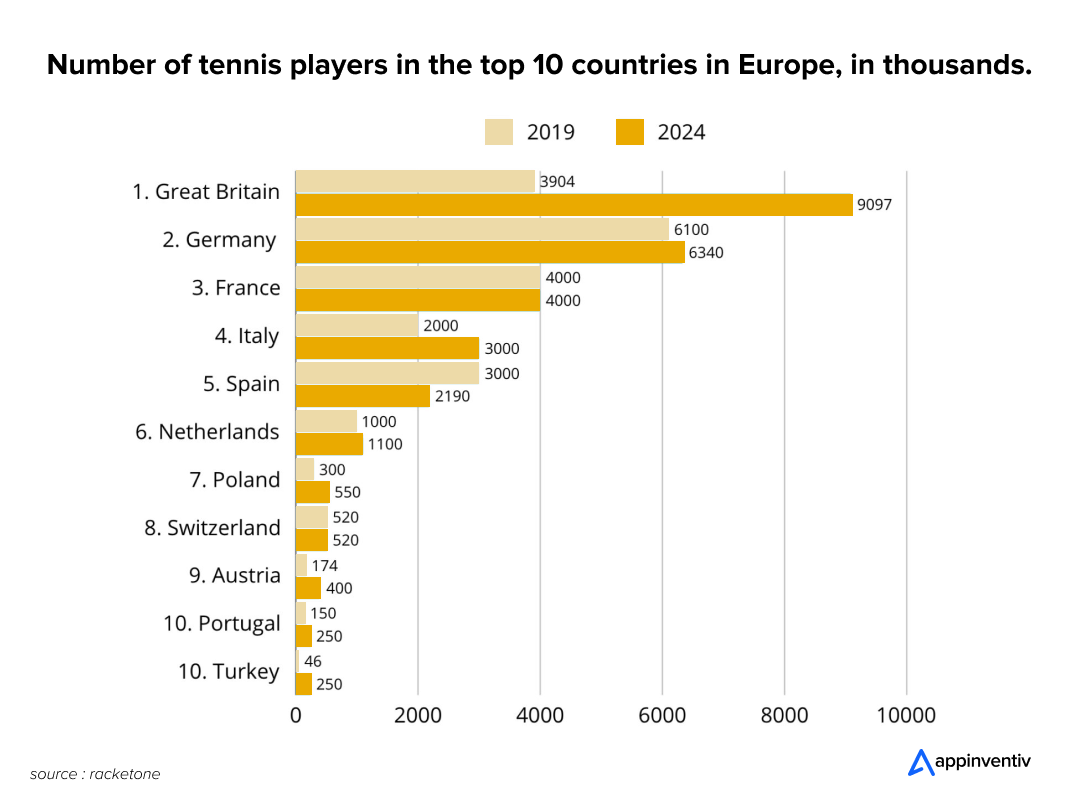
The tennis craze is wide and expanding, from grassroots courts to grand tournaments like the US Open, Wimbledon, and the French Open. So, as the tennis craze continues to skyrocket, the demand for smarter, scalable software development for tennis tournaments has never been higher.
Why?
The answer is obvious: organizing a tennis tournament with a massive player base and global audience is no small feat. From team registrations to match schedules and real-time score updates, the challenges can quickly pile up. Whether managing a local league or an international championship, handling all the moving parts can be a real pain, with countless details to organize and oversee.
- What defines a successful tennis tournament software (TTS)?
- What features will take your tournament organization to the next level?
- How does it streamline operations to ensure a seamless experience for organizers, players, and fans alike?
Well, this blog is your ultimate playbook, guiding you through the process, cost, and features of tennis tournament software development.
Why Software Development for Tennis Tournament is Essential
Managing a tennis tournament at a local, national, or international level can be a logistical challenge. From handling player registrations, scheduling matches, tracking live scores, and managing venue allocations, organizers are loaded with multiple accountabilities and tasks. Manual processes often lead to errors, inefficiencies, and scheduling conflicts, which leads to subpar or usually degraded tournament experience. This is where a tech-driven tennis tournament software solution emerges as a true savior.
Let’s take a quick view at some of the impressive advantages of tennis tournament software development:
- A tennis tournament management software simplifies this complexity by automating key tasks.
- It streamlines player registration and automatically generates match brackets, reducing administrative burdens.
- With features like AI-powered scheduling, court management, and leaderboard updates, organizers can ensure a seamless experience for players, referees, and fans alike.
- Additionally, advanced AI analytics offer valuable insights into player performance and tournament trends, helping organizers refine future events.
- What’s more? Beyond operational efficiency, the software enhances audience engagement.
- Features like forums, social sharing, and community interactions allow fans to connect globally and discuss matches, favorite players, and strategies.
- The software provides real-time updates and insights on live scores, match statistics, and player ranking.
- Push notifications and interactive leaderboards keep spectators updated, making tournaments more immersive.
The benefits of tennis tournament software development are unarguably amazing. In fact, it is indispensable for delivering a seamless and smooth sports experience.
Features of Tennis Tournament Software Development
A successful tennis tournament software goes beyond just organizing matches. It brings efficiency, transparency, and engagement to every aspect of tournament management. How does TTS do it? Credit goes to its cutting-edge features.
From streamlining registrations to providing real-time updates and delivering a seamless experience to players, organizers, and fans alike, the right set of features makes all the difference in running a successful event.
Let’s have a quick view at some of the basic and advanced features of tennis tournament software development.
Basic Features for Tennis Tournament Software Development
The basic features form the core framework of any tennis tournament software. These functionalities ensure that the essential operations are handled smoothly. They are designed to simplify the management process for organizers while providing a user-friendly experience for players and fans.
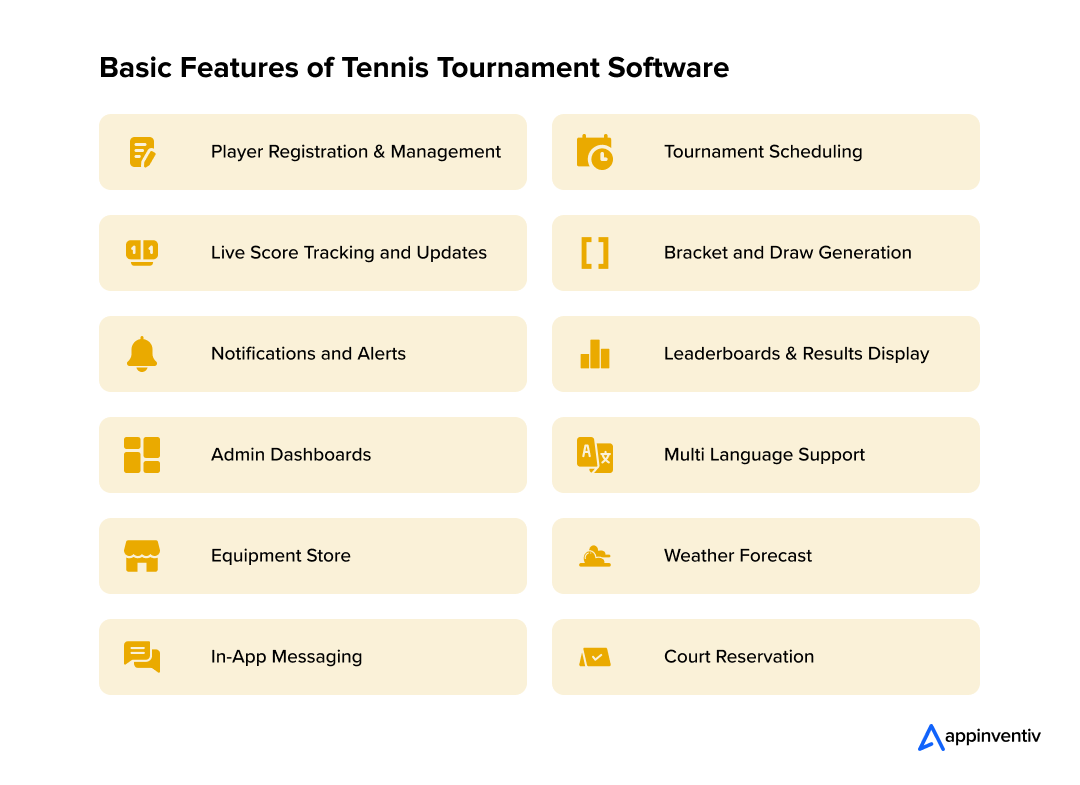
Player Registration and Management
This essential feature allows players or teams to register online, fill out their details, upload required documents, and easily manage their profiles. It reduces manual work and saves time for both participants and organizers.
Tournament Scheduling
An intuitive scheduling system helps organizers schedule and manage matches efficiently. Whether the tournament follows a knockout, round-robin, or league format, this feature automatically generates schedules, avoids conflicts, keeps everything on track, and ensures fair play.
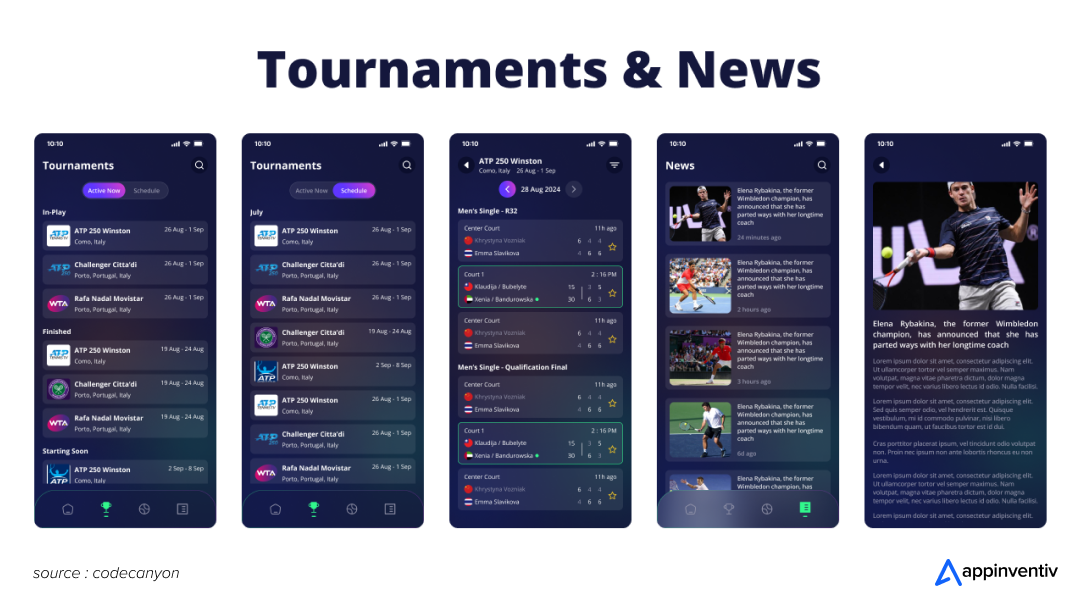
Live Score Tracking and Updates
Integrating live score updates into the tennis tournament software provides players, fans, and organizers with real-time updates about ongoing matches. This feature enhances spectator engagement by delivering up-to-the-minute information.
Bracket and Draw Generation
This feature automatically generates brackets and match draws based on the tournament format and seeding rules. It minimizes human error and ensures transparency in pairing players for each round.
Notifications and Alerts
Push notification is an integral feature for tennis tournament software development. This feature sends automated alerts and notifications for important updates like match timings, venue changes, weather delays, and results, keeping everyone in the loop.
Leaderboards and Results Display
Displaying live results and dynamic leaderboards related to players’ rankings and tournament progress on the software or website is an important feature. It helps create excitement and transparency for players and viewers alike.
Admin Dashboard
This feature facilitates a centralized control panel for administrators to manage player data and match results, schedules, and communications. The dashboard offers a simple, organized interface to oversee all operations effectively.
Multi-Language Support
Cater to a global audience by offering the platform in multiple languages. This ensures participants and fans from different regions can navigate and engage with the software comfortably, breaking down language barriers.
Equipment Store
An integrated store into the software allows players and fans to browse and purchase tennis equipment, merchandise, and accessories directly through the platform. It’s a convenient way to support participants while generating lucrative income from the platform.
Weather Forecast
By getting real-time weather updates and forecasts directly within the software. Organizers and players can plan matches better, avoiding delays or cancellations due to unexpected weather conditions.
Also Read: How much does it cost to build a weather app like WillyWeather
In-Platform Messaging
Direct messaging in the platform keeps communication flowing between players, coaches, and organizers. This feature simplifies coordination, provides timely updates, and ensures everyone stays informed during the tournament.
Court Reservation
This feature allows players to book courts in advance through an easy-to-use reservation system. It reduces scheduling conflicts and ensures everyone knows where and when they play.
Advanced Features for Tennis Tournament Software Development
These features are not essential to building tennis tournament software but bring innovation and scalability to the solution. They enhance functionality beyond basic needs, making the software more intelligent, flexible, secure, and capable of handling larger, more complex tournaments while elevating user engagement.
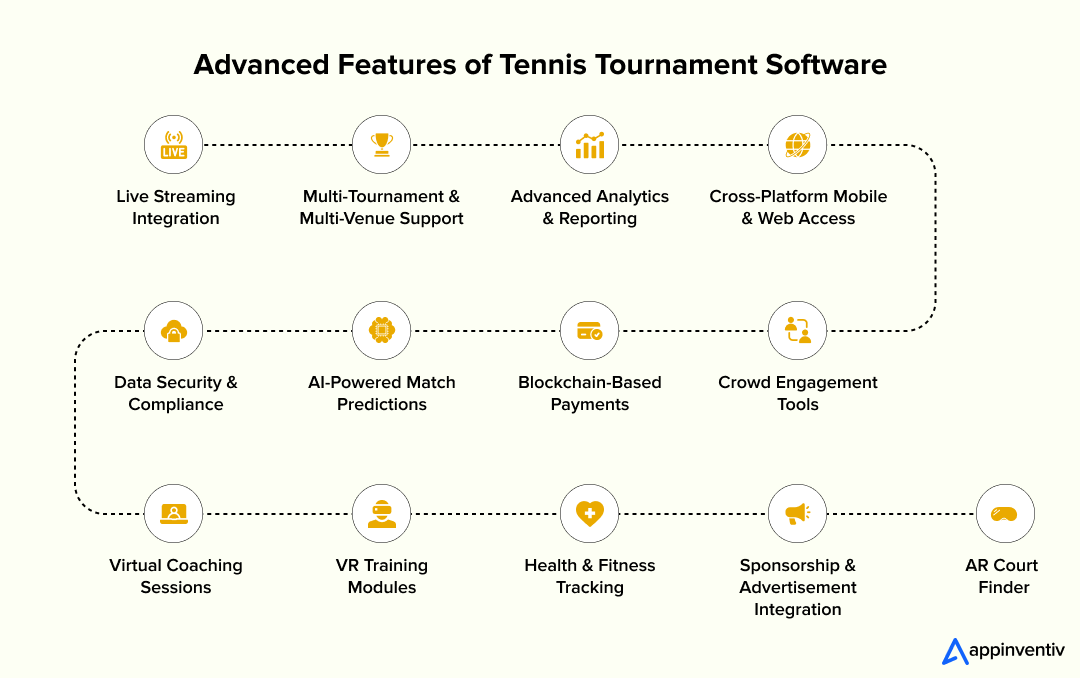
Live Streaming Integration
This feature allows matches to be broadcast directly through the platform, allowing fans to watch live games remotely. Integrated live chat and commentary can further enhance viewer interaction and engagement.
Advanced Analytics and Reporting
Integrating this feature into the platform helps generate comprehensive reports on player performance, match statistics, audience engagement, and financial data. These insights help organizers make informed decisions and improve future events.
Multi-Tournament and Multi-Venue Support
This feature is essential for large-scale events and organizations running multiple leagues or seasons, empowering organizers to manage several tournaments simultaneously across different locations.
Cross-Platform Mobile and Web Access
You must ensure the tennis tournament application development works seamlessly across all devices, including mobile apps and web platforms. This allows players and organizers to access tournament details anytime, anywhere.
Data Security and Compliance
You must implement robust security measures such as data encryption, role-based access control, and compliance with GDPR and other data privacy regulations. This feature protects user information and ensures a secure platform experience.
AI-Powered Match Predictions
Integrating artificial intelligence into the tennis tournament software helps predict match outcomes based on player stats, form, and historical data, adding excitement for participants and fans.
Also Read: AI in Sports: Applications and Use Cases
Blockchain-Based Payments
Blockchain technology in sports platforms like tennis tournament software enables secure, transparent, and instant transactions for entry fees, prize distributions, and platform purchases. This also helps verify match results and players’ statistics.
Crowd Engagement Tools
Interactive tools such as live polls, Q&A sessions, live commentary, and fan voting allow spectators to stay engaged throughout the matches and tournaments.
Virtual Coaching Sessions
This feature lets players connect with professional coaches through live, interactive video sessions. Whether it’s one-on-one training or group workshops, players can receive personalized feedback, improve techniques, and stay competitive.
AR Court Finder
Finding a tennis court has never been easier. Still, with AR-powered court discovery, players can explore nearby courts in real time, view facilities through interactive overlays, and even get directions. This simplifies the process of finding the best court to play tennis.
VR Training Modules
VR training brings a new dimension to practice sessions. Players can immerse themselves in lifelike match simulations, refine their techniques, and develop strategies in a virtual environment.
Health and Fitness Tracking
This feature tracks key health metrics such as heart rate, calories burned, and movement patterns during training or matches. It helps players stay on top of their fitness goals, avoid injuries, and improve performance by offering actionable insights.
Sponsorship and Advertisement Integration
By integrating sponsor banners, in-platform ads, and branded content into the software, you can efficiently monetize your platform without disrupting the user experience. This feature offers real value to organizers while enhancing users’ experience.
How to Develop Tennis Tournament Software – A Step-by-Step Process
Now that you know what it takes to build great tennis tournament software, let’s take a deep dive into the process of creating one for your sports business. Here is a six-step process to build tennis tournament software to automate operational processes and attract audiences.
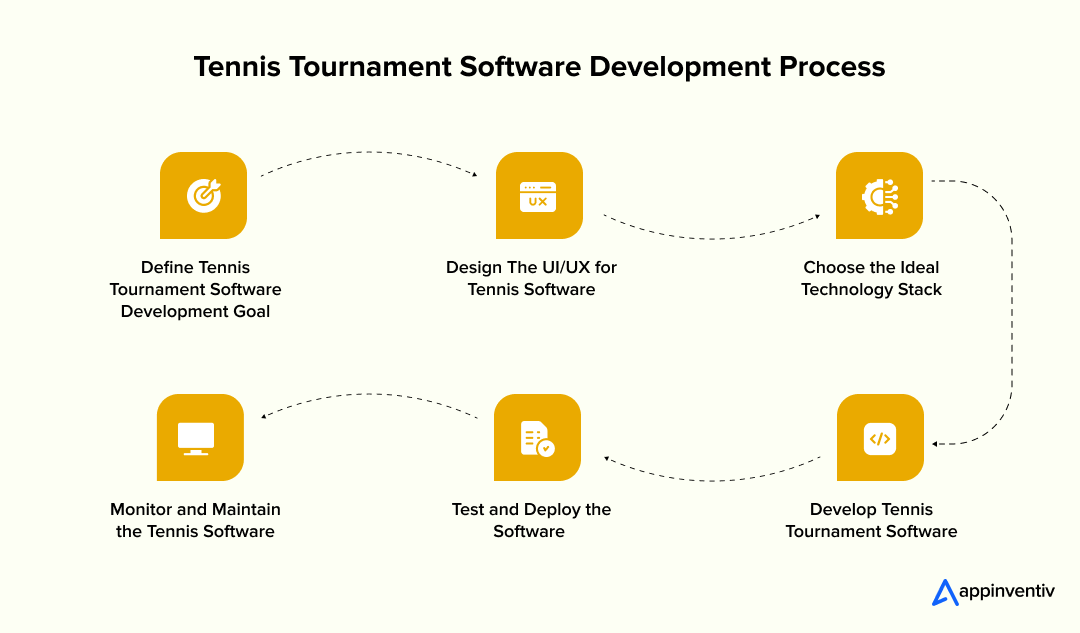
Step 1: Define Project Goals
The first and foremost step of the tennis tournament software development process is to conduct thorough research on market trends, target audiences, and competitors’ offerings. Having a clear understanding of market gaps and users’ needs (tournament organizers, players, coaches, and fans) helps you build tennis tournament software that best serves the purpose.
Step 2: Design UI/UX
After collecting all the essential information and defining your project goals, it is time to craft an intuitive and visually appealing UI/UX that enhances user engagement. At this stage, your tennis tournament software developers and designers create a wireframe or prototype that helps you visualize the layout of key components, such as player registration, match schedules, leaderboards, and score-tracking dashboards.
Step 3: Choosing the Right Tech Stack
Selecting the appropriate technology stack is one of the most crucial steps of the tennis tournament software development process. The selection of tech stack directly impacts scalability, performance, and user experience. So, take this step cautiously and choose frameworks and programming languages that support scalability and cost-effectiveness.
Here is a list of some ideal tech stacks to build secure and scalable British tennis tournament software:
- Frontend: React, Angular, or Flutter for a seamless user experience.
- Backend: Node.js, Python, or Java for handling data processing and logic.
- Database: MySQL, MongoDB, or PostgreSQL for storing tournament data.
- Cloud and Hosting: AWS, Google Cloud, or Azure for scalability and reliability.
- Technologies: AI, ML, and Blockchain for predictive analytics and personalized recommendations.
Step 4: Develop Tennis Tournament Software
With a clear roadmap in place, the development phase begins, where the core functionalities of the tennis tournament software are implemented, and your idea turns into triumph. This stage involves coding, database structuring, API integration, security implementation, and the integration of essential features to create a seamless and scalable platform.
Step 5: Test and Deploy the Software
After development, it is time to conduct thorough testing and ensure the developed product is free from errors, bugs, or glitches. Perform unit, performance, security, and UAT testing to ensure the software is secure and functions correctly to meet user expectations. Once the product is tested and quality checked, you can deploy it to live servers or intended platforms.
Step 6: Monitor and Maintain the Software
The tennis tournament software Development Process does not end at deployment; it extends to updates and maintenance. In fact, regular updates and maintenance are ongoing processes that fix bugs, implement new features, and release regular updates. This helps adapt to new tournament requirements and meet user expectations.
Bonus Read: How Much Does it Cost to Maintain a Software
Challenges of Tennis Tournament Software Development and How to Overcome Them
Software development for tennis tournaments is quite a complex and challenging process. It comes with its own set of challenges, which must be addressed strategically to ensure seamless and successful development. Not sure how to overcome the barriers that come in the way of tennis tournament software development? No worries, here is a look at some key challenges and ways to overcome them.
Real-Time Score and Data Updates
- Challenge: Ensuring accurate and instant score updates across multiple matches can be challenging, especially for large tournaments.
- Solution: Use cloud-based architecture and real-time data streaming to synchronize platform scores, ensuring instant updates without lag.
Multi-Platform Compatibility
- Challenge: Due to differences in the operating systems, ensuring the software works seamlessly across web, mobile, and desktop devices while maintaining a consistent experience can be intimidating.
- Solution: Adopt a cross-platform development approach using frameworks like React Native or Flutter to maintain consistency and reduce development costs.
Compliance and Data Security
- Challenge: Another major challenge is ensuring data privacy and protecting sensitive players and financial data from cyber threats.
- Solution: Implement a multi-factor authentication system, data encryption, and compliance with security regulations like GDPR and PCI-DSS to ensure foolproof protection.
Integrations with Third-Party Services
- Challenge: Many tournaments require integration with live-streaming platforms, analytics tools, and ticketing systems, making development complex.
- Solution: Use well-documented APIs and modular architecture to ensure smooth third-party integrations without compromising performance.
Contact us for a detailed roadmap and expert assistance for developing tennis tournament software.
Cost to Build Tennis Tournament Software
There is no one-size-fits-all formula to quote the exact cost to build tennis tournament software. On average, the cost of software development in the UK for tennis tournaments ranges between $40,000 and $400,000 or more.
However, it is just a rough estimate. The actual cost can increase or decrease depending on your unique project requirements and other factors. This includes but is not limited to the project’s complexity, features set, UI/UX design, tech stack used, platform compatibility, the expertise of tennis tournament software developers, and so on. Understanding these cost drivers is crucial to setting the budget and making an informed decision.
For instance, a basic tournament management system with essential features like scheduling and player registration costs less than an advanced AI-powered solution offering live score updates, automated bracket generation, and real-time analytics. Likewise, third-party integration, choice of the tech stack, and other critical components directly impact the final development cost. More integration and an advanced tech stack mean higher costs to build tennis tournament software.
Here is a tennis tournament software development cost breakdown based on the project’s complexity and features list.
| Software Complexity | Average Cost | Average Timeline |
|---|---|---|
| Simple solution with basic features | $40,000-$50,000 | 4-6 months |
| Medium complex platform with moderate features | $50,000-$120,000 | 4-9 months |
| A highly complex system with advanced features | $120,000-$400,000 or more | 9 months to 1 year or more |
Monetization Strategies for Tennis Tournament Software Development
Developing tennis tournament software is a significant investment, but the good news is that implementing the right strategies can generate lucrative ROI and ensure long-term profitability. The table below highlights the effective ways to generate revenue from your tennis tournament software:
| Monetization Strategy | Description |
|---|---|
| Freemium Model | Offer basic features for free while charging for premium functionalities like AI analytics, live streaming, or advanced scheduling. |
| Advertising | Display banner ads, sponsored content, or video ads from sports brands and equipment manufacturers within the platform. |
| Subscription Model | Charge a monthly or annual fee to access different feature tiers catering to organizers, clubs, and players. |
| In-Platform Purchases | Offer add-ons such as live score tracking, premium tournament insights, or exclusive coaching materials for an additional fee. |
| Merchandise Sales | Sell branded merchandise like tournament apparel, sports gear, and accessories directly through the platform. |
| Sponsorship and Promotion | Partner with sports brands or event sponsors to feature their logos, promotions, or exclusive deals on the platform. |
| White-Label Solutions | License the software to other organizations, allowing them to customize and rebrand it for their tournaments. |
Build Next-Gen Tennis Tournament Software with Appinvenitv
As the global sensation of tennis is making players and fans gaga over it, the demand for smarter, more scalable tournament management solutions is at an all-time high today in Europe and worldwide. Whether managing a local league or an international championship, reliable and feature-rich tennis tournament software can make all the difference. From streamlining registrations and match scheduling to enhancing player engagement and delivering real-time updates, the right solution transforms the entire experience for organizers, players, and fans.
As a leading UK-based custom software development company, Appinventiv specializes in building scalable solutions, including for the growing sports software sector.
With a proven track record of delivering scalable, user-centric digital solutions, we help businesses create seamless tournament software powered by advanced technologies like AI, AR/VR, blockchain, and more.
Ready to take your tennis tournament management to the next level? Let’s connect, and our skilled team of tech experts stands by you throughout the development process to build a winning solution.
FAQs
Q. How long does it take to develop a tennis tournament software?
A. The time it takes to develop tennis tournament software ranges from 4 months to a year or more. For instance, simple software with basic features takes anywhere between 4 and 6 months, while a more complex solution with advanced features takes 6 months to a year or more for full-scale development.
Q. How much does it cost to build a tennis tournament software?
A. The cost to build tennis tournament software ranges between $40,000 and $400,000 or more, depending on several factors (mentioned above).
To get a more precise estimate for tennis tournament software development costs, please get in touch with our skilled tennis tournament software developers in the UK.
Q. What factors affect the overall cost of tennis tournament software development?
A. several factors can impact the total cost of tennis tournament software development, including:
- Project Complexity
- Feature Set
- Platform Compatibility
- UI/UX Design
- Tech Stack Used
- Development Team Location
- Post Launch Support and Maintenance
- Third-Party Integrations
- Compliance and Security Measures
Q. What are some common types of tennis software?
A. Here are some of the most common types of tennis software:
- Tennis Tournament Management Software
- Tennis Fantasy Sports Software
- Tennis Score and Performance Tracking Software
- Tennis Social Networking Software
- Tennis Club Management Software
- Tennis Fan Engagement Platforms
- Tennis Coaching and Training Software


- In just 2 mins you will get a response
- Your idea is 100% protected by our Non Disclosure Agreement.
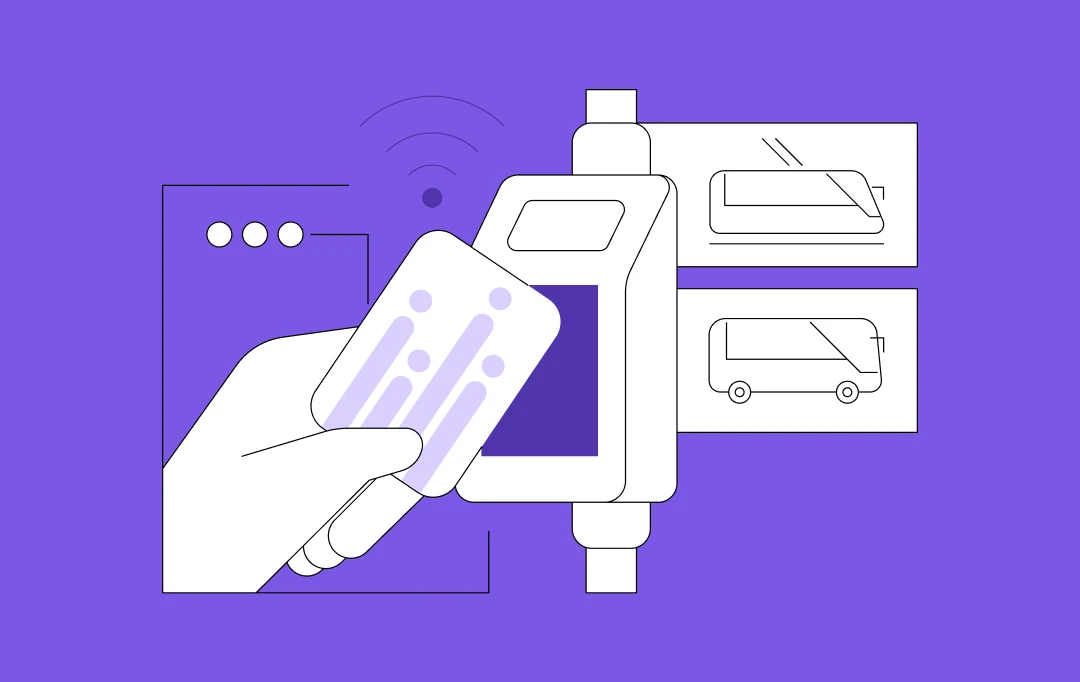
How to Build an RFID Asset Tracking System in The UAE?
Key takeaways: The success of an RFID asset tracking system is dictated by the quality of the custom software and middleware, which must transform voluminous raw tag data into actionable intelligence. Implementation of RFID systems requires a managed, multi-stage process, moving logically from Integration Consulting and architectural design to Continuous Monitoring and Optimization, which is…

How to Build a White-Label Grievance Management Software? Process, features, costs
Key Takeaways White-label grievance management software allows businesses to quickly implement, rebrand, and scale solutions without reinventing the wheel. The development process involves multiple stages, including requirement gathering, workflow design, tech stack selection, and ensuring compliance and scalability. Key features include multi-channel intake, automated routing, customizable workflows, AI-driven categorization, and built-in compliance and security. Costs…
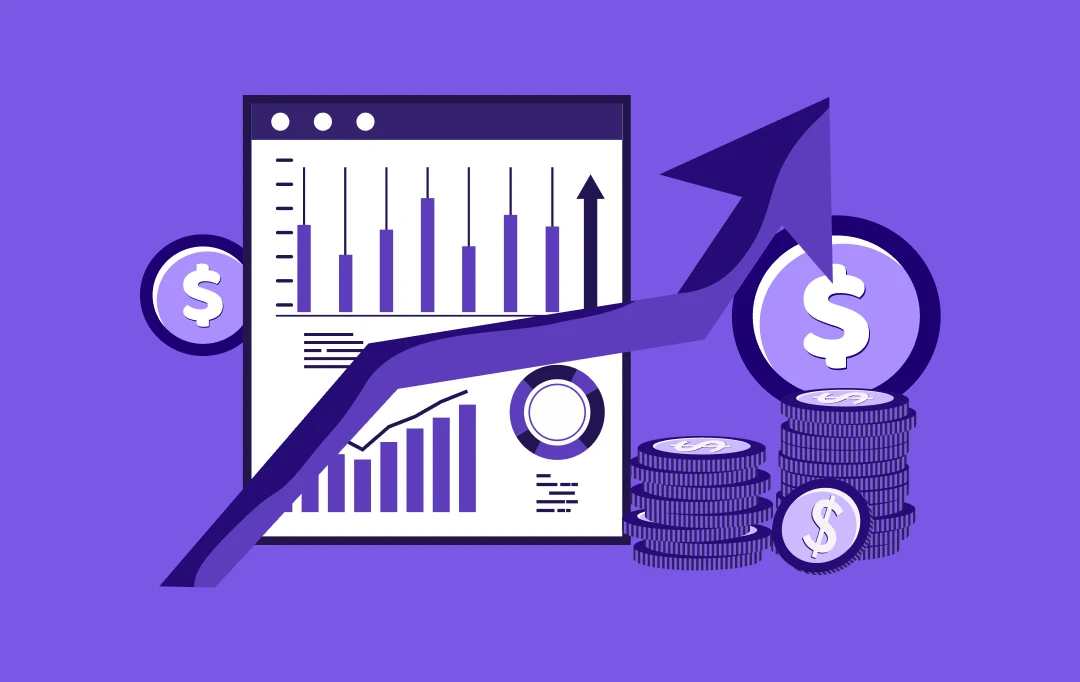
How to Build a Demand Forecasting Software?
Key Takeaways Modern demand forecasting software leverages AI and real-time data to boost accuracy and efficiency. Custom solutions integrate seamlessly with ERP, CRM, and inventory systems for end-to-end visibility. Accurate forecasting reduces costs, optimizes resources, and improves customer satisfaction. Cloud-based, scalable platforms make advanced demand planning accessible to businesses of any size. Demand forecasting used…














